Adventure Comics #250 (1958)
by Bill Finger & Jack Kirby
“The Green Arrows of the world”
One of my Patreon requests is to look at something from the seldomly discussed Jack Kirby run on Green Arrow, so let’s have a look at one that is arguably historically important.
Green Arrow is a strange case when it comes to publishing history.
He first appears in 1941 and is one of the few superheroes that kept on going even after the Golden Age was over. In fact it’s not really easy to spot the transition to the Silver Age when it comes to the character: Green Arrow’s serial on Adventure Comics lasts from #103 in 1946 all the way to #269 in 1960.
Since there wasn’t any serious interruptions in his publishing history, Green Arrow avoided the radical redesign of fellow Golden Age heroes like Flash or Green Lantern, who unlike the archer had a long gap between appearances.
There is one other Golden Age character that shares exactly the same direction: Aquaman was ALSO published on Adventure Comics between the Silver and Golden ages.
The fact that both Green Arrow and Aquaman were created by Mort Weisinger, the legendary Superman editor, might have had something to do with it to say the least!
While a clear definition of which Green Arrow belongs to the Silver Age esclusively is a matter of debate, the first Earth-One story is often regarded as Adventure Comics #250… which also happens to be when Kirby works on the serial.

As the story title implies, the story is about Green Arrow organizing a convention of superhero archers from all over the world.
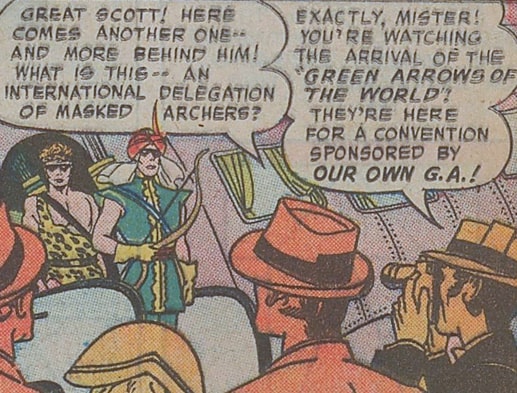
If the idea sounds familiar, it’s probably because something like this was done for Batman in Detective Comics #215 (written by Edmond Hamilton) in 1955, where we got to meet the “Batmen of All Nations”, a loose organization of superheroes from across the world inspired by Batman and Robin.
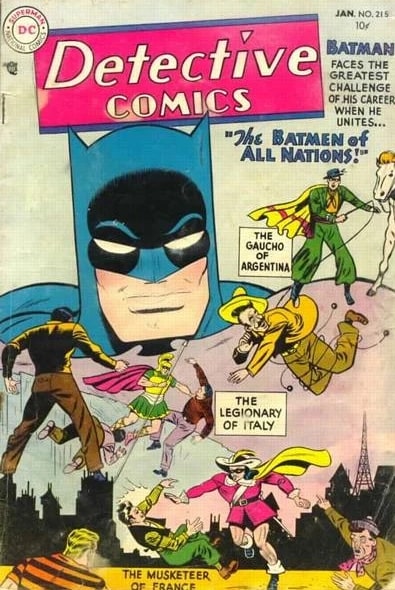
The Batmen of All Nations, later renamed the Club of Heroes, returned a few times and were even re-introduced in modern times by Grant Morrison.
The Green Arrows Of The World, by contrast, only have this issue. Because whenever Green Arrow blatantly copies from Batman instead of doing his own thing, it rarely goes well.
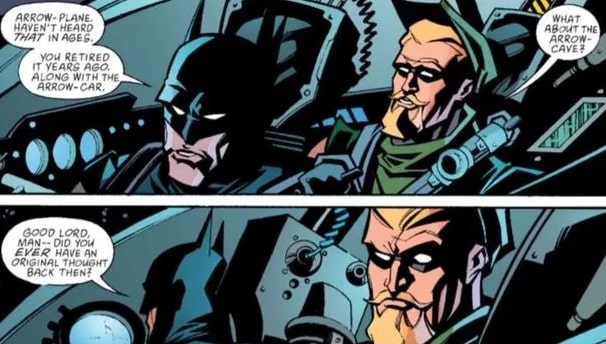
It should also be mentioned that the “Batmen of All Nations” were not simply heroes dressed like Batman and calling themselves Batman; while they were a bunch of walking stereotypes, they at least had some originality.
The Green Arrows all dress like Green Arrow and just add some stereotypical attire.
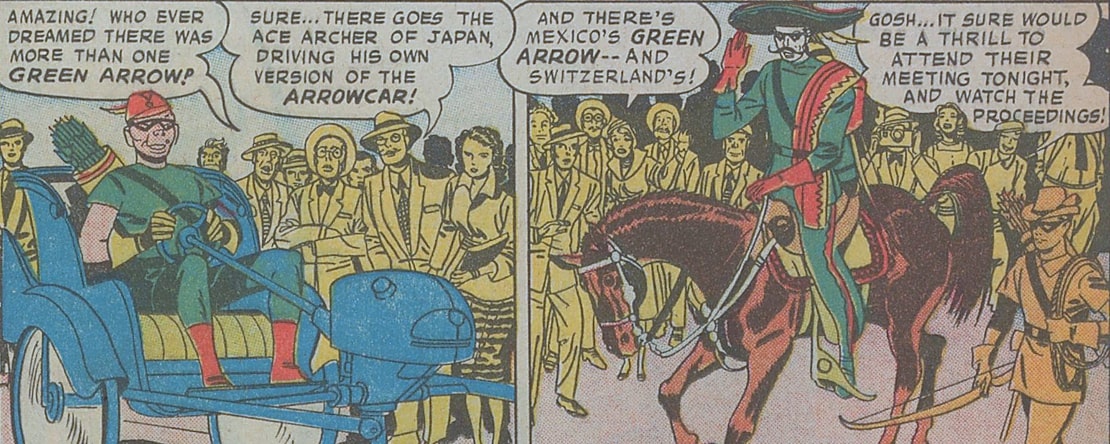
Not everything goes well, because one guy robs the Green Arrow of the UK.
Who could’ve imagined that a purple archer would hate Green Arrow!
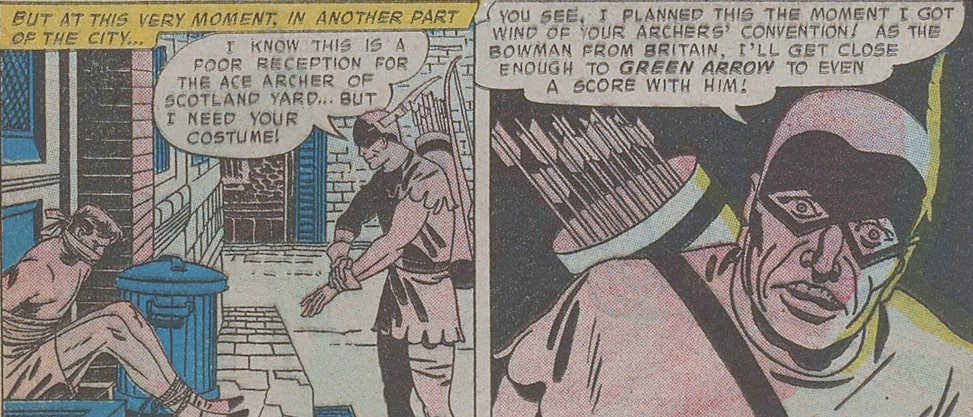
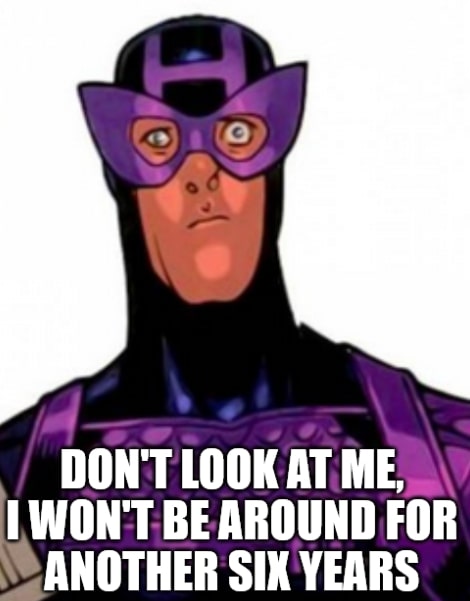
You know I wouldn’t mind if the entire thing was just a contest to determine who has the most ridiculous trick arrow…
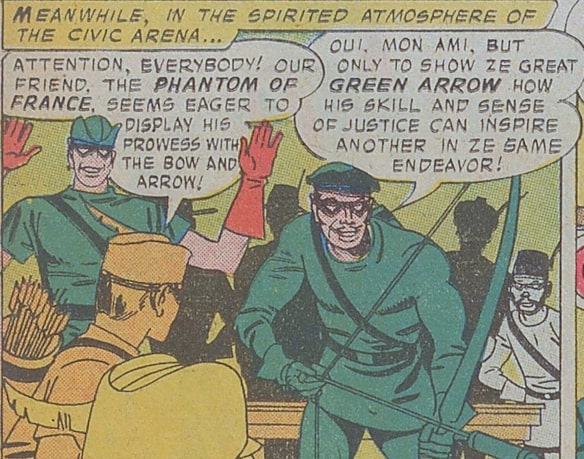
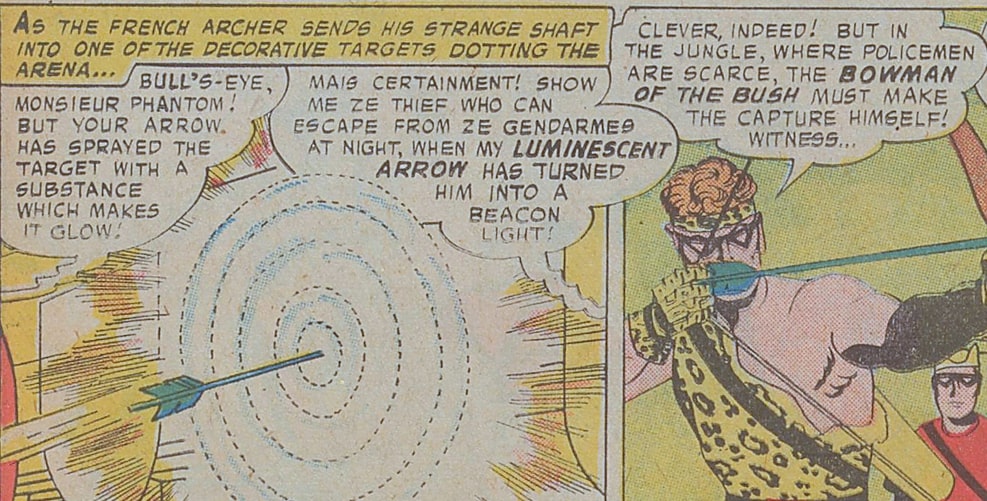

…but we have to pretend there’s a plot.
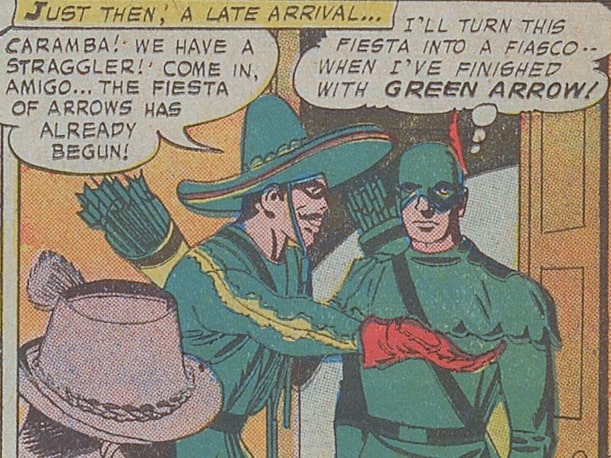
Which is a pity because I think the “Big Ben Arrow” was a strong contender for the most ridiculous arrow if it was actually the real deal and not a trick.
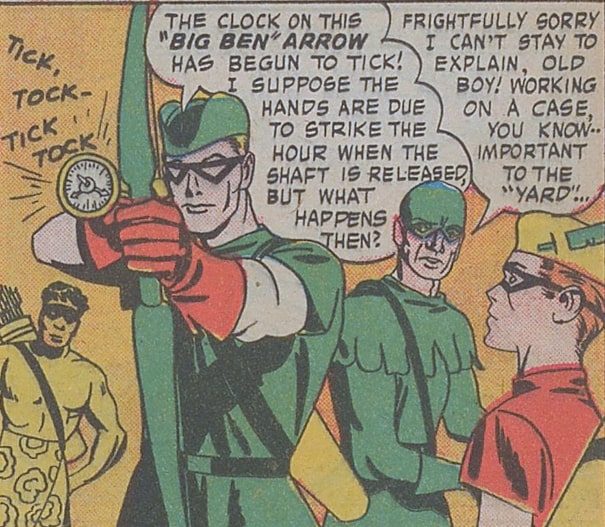
But AMAZINGLY, Green Arrow is smart enough to avoid dying because he was holding a Ticking Time Bomb Arrow.
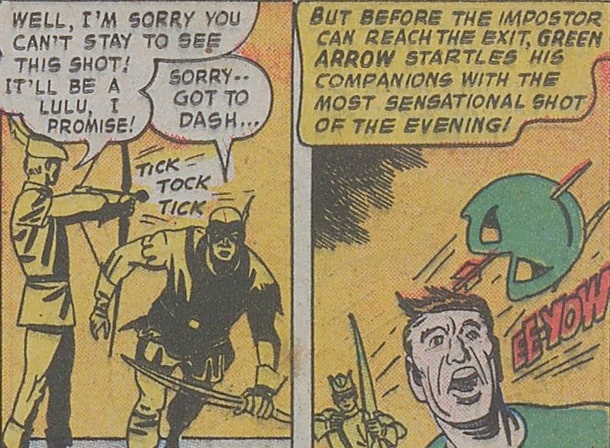
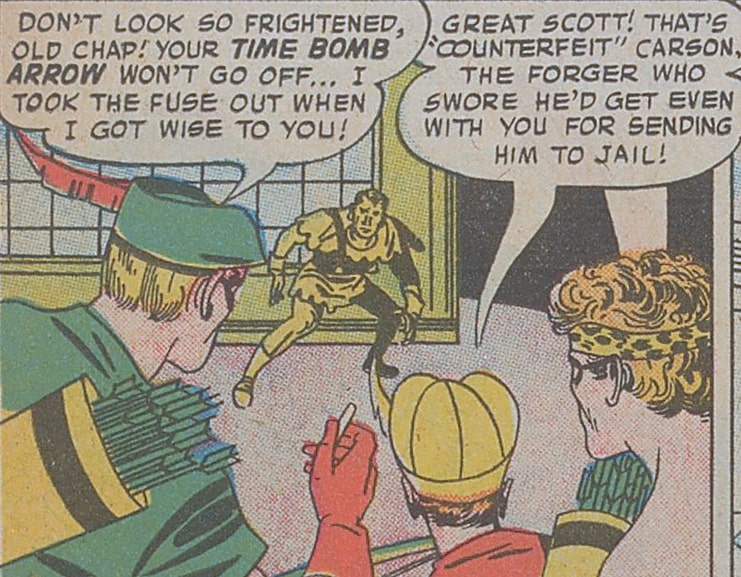
Hey that’s not fair, you were only supposed to use ridiculous arrows, not mildly useful ones!
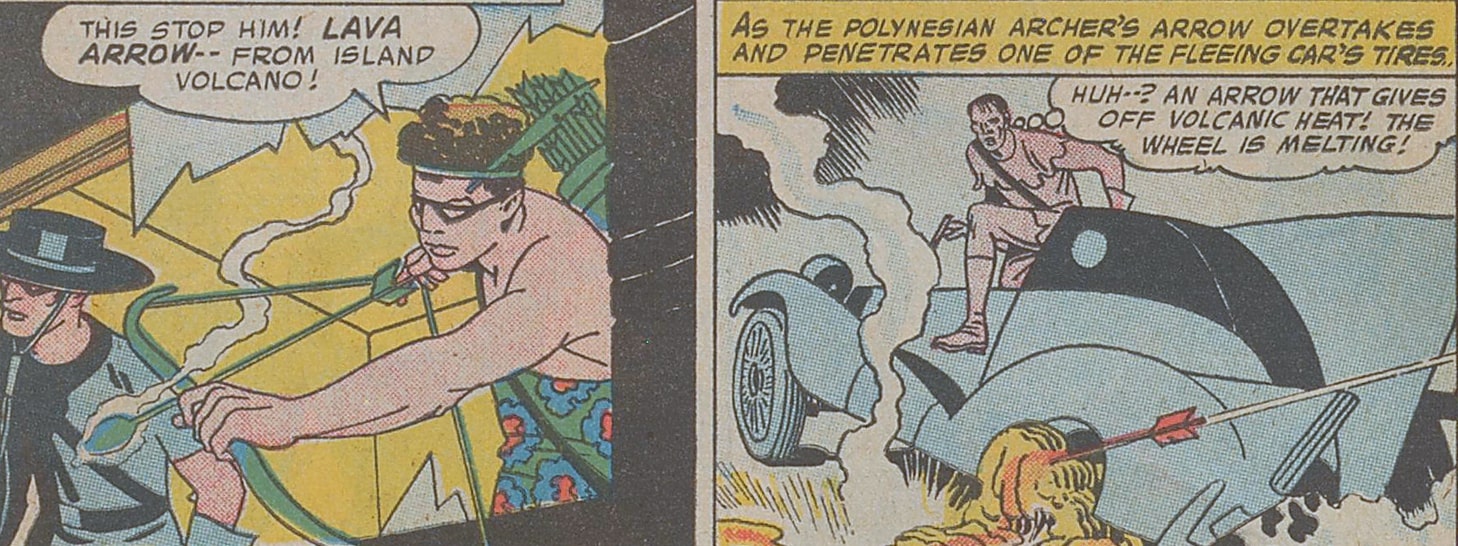
Ladies and gentlement, we might have a winner. Can ANYONE beat the sheer ridiculousness of the Jiu Jitsu Arrow?
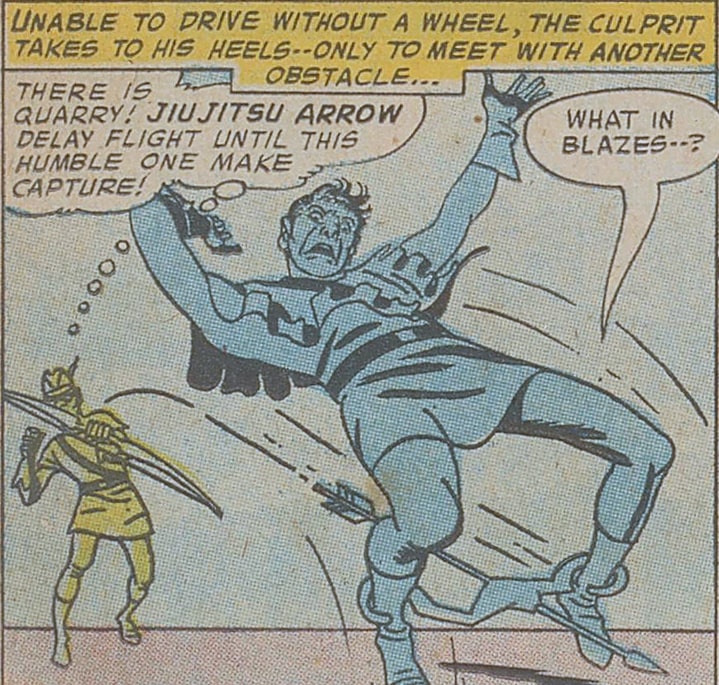
Indeed we do! Because when the fake archer hides in a crowd, the original Green Arrow brings out his masterpiece of ridiculousness: the Heli-Spotter Arrow.
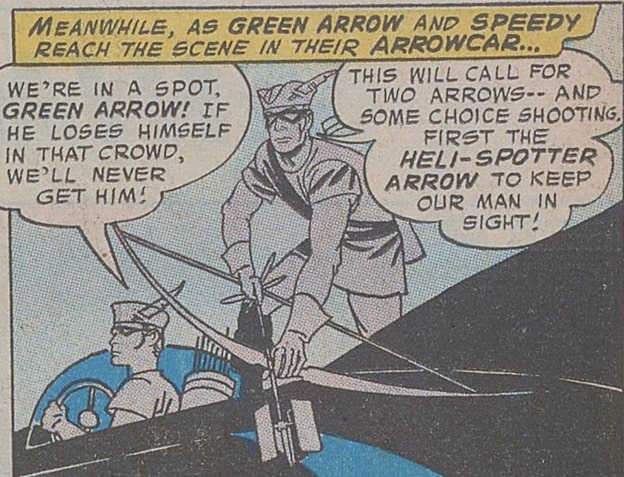
Which is… kind of a primitive drone with three mirrors.
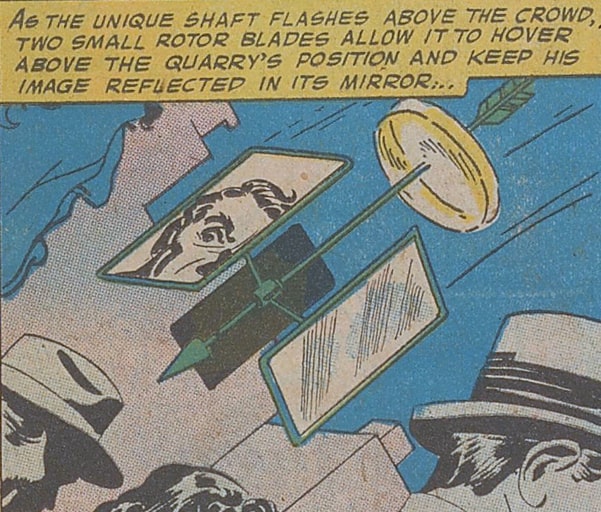
Bonus points for the Heli-Spotter Arrow: it’s not exceptionally useful, since Green Arrow needs to add the Ricochet Arrow to do anything.
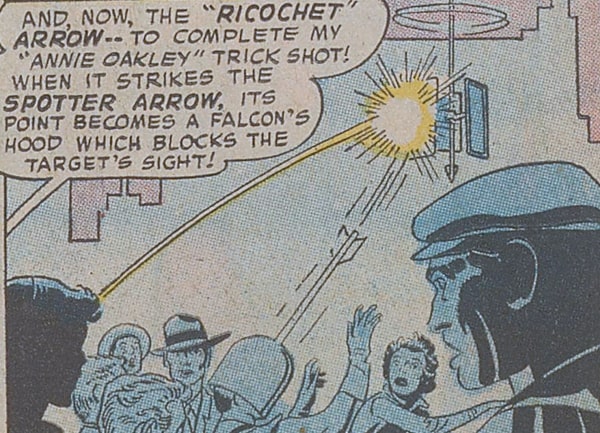
And that’s the end: turns out the impostor was so dumb that he tried to convince Green Arrow to arrest a guy using a reward with the wrong currency.

The UK Green Arrow is supposed to be from England. Do they really say “I’m beastly sorry” there?
Historical significance: 0/10
I’m not entirely sure why THIS is singled out as the first Earth-One story featuring Green Arrow, considering none of the other archers appear again and he’s not significantly different from the previous issues.
Silver Age-ness: 8/10
This is apparently a universe where if you want to fight crime you MUST have an archer motif even if it makes absolutely no sense.
Does it stand the test of time? 0/10
This is BARELY a story… there’s no character to speak of and the plot is simplistic at best.
The contrast with the “Batmen of All Nations” is striking: THOSE guys had different motifs and costumes, they didn’t just slap a beret or a poncho on Batman!
The only excuse Green Arrow has is that there are only 6 pages to work with.
For a story with Jack Kirby pencils, the artwork is surprisingly unremarkable; it’s obviously perfectly fine from a storytelling perspective, but it definitely lacks any “wow factor”. Interestingly, the inks are by his wife Roz.
The coloring certainly is making Kirby no favors, because whenever he tries to go into a little more details with the backgrounds, the coloring washes it all out (look at those crowd scenes for example).
Bonus: the cover story is of course Superboy’s, who gets a call from the 30th century.
“The Imposter from the Year 2958”
by Bill Finger & John Sikela
This is just three issues after the first Legion story, but it’s completely unrelated.
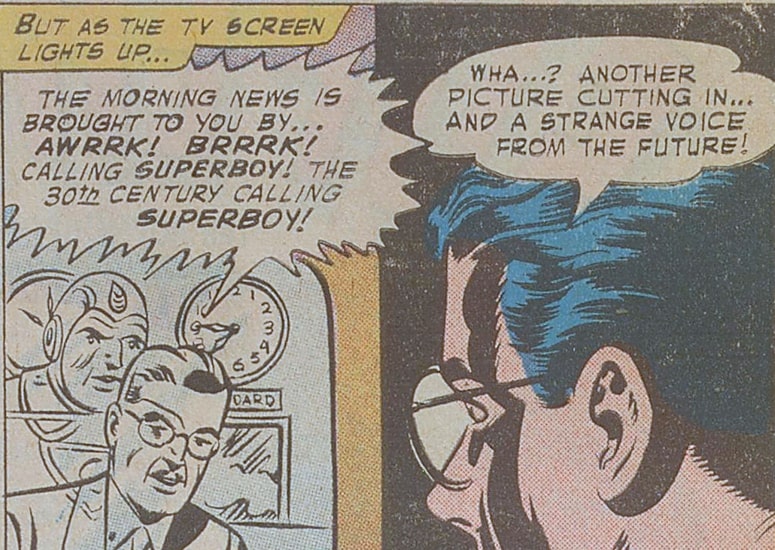
Superboy is alerted that a future criminal called Lorac is in the 20th century to steal some radiactive material. It’s a neat mystery because the criminal knows Superboy’s identity and is either a shapeshifter or has disguising technology.
Plus, the time machine used looks suspiciously similar to the Legion’s Time Bubble.
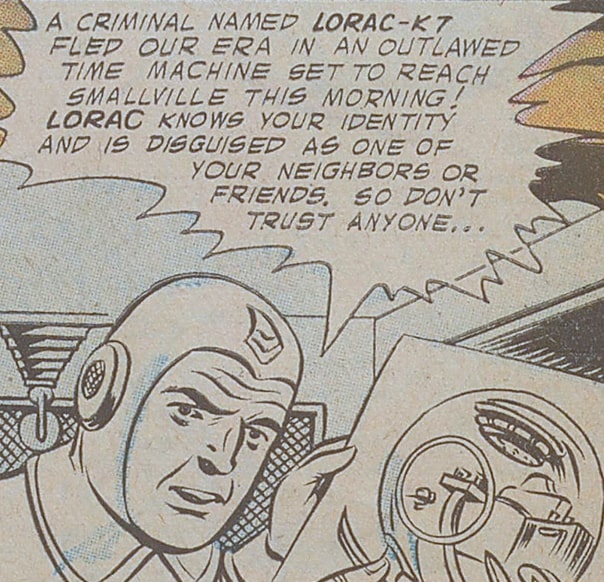
Superboy eventually realizes that Lorac is a girl, because I guess if he was a guy he couldn’t disguise himself as one.

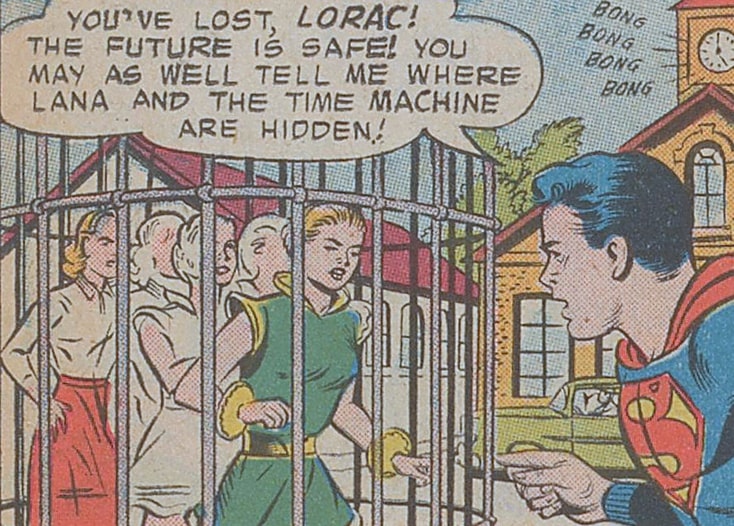
Not only that, but Lorac is actually a descendant of Lana!
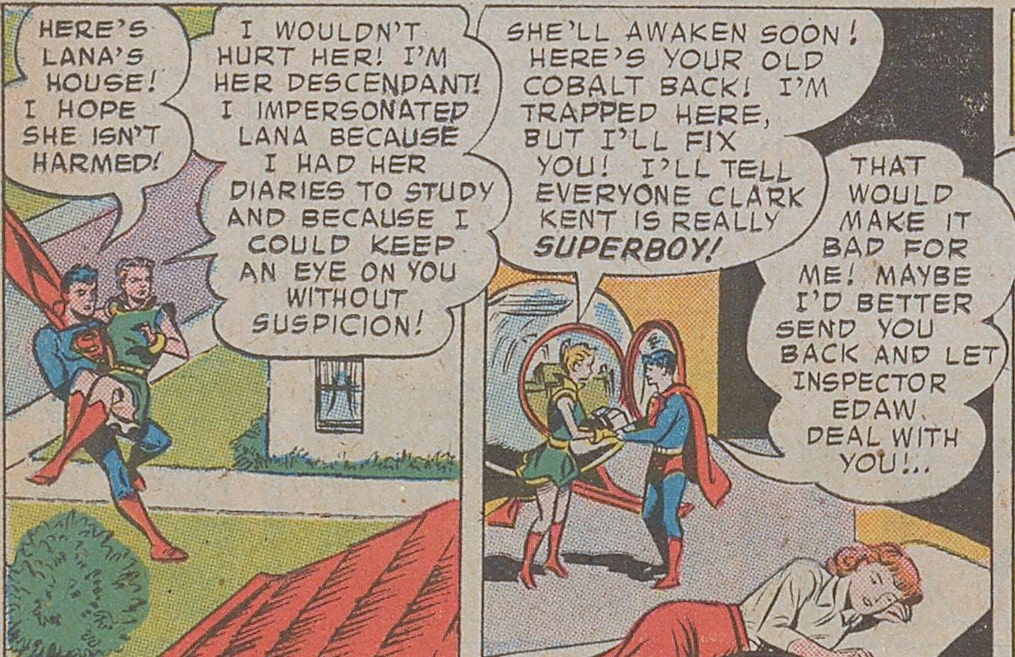
Superboy tricks her into leaving without the radioactive material she stole, and apparently her time machine is what would happen if you tried to convert the Time Bubble into a helicopter and gave up halfway.

